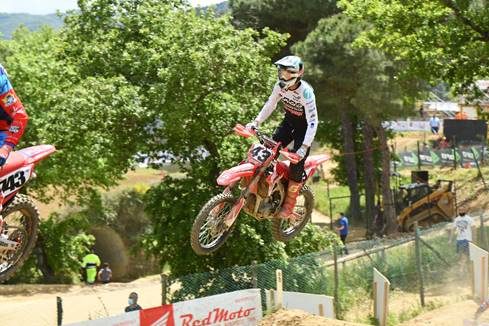

Il nostro reparto di produzione del “100% Silicone” utilizza sia la soluzione di stampaggio ad iniezione di gomma siliconica liquida bicomponente (LSR – Liquid Silicon Rubber), sia la produzione per compressione di silicone solido (HTV) vulcanizzato.
Questo è un polimero che rispetta l’ambiente in ogni fase della sua produzione e del suo utilizzo e al termine della sua vita ritorna allo stato di silice inerte.
Our “100% Silicone” production department uses both the injection molding solution of two-component liquid silicone rubber (LSR - Liquid Silicon Rubber), and the production by compression of vulcanized solid silicone (HTV).
This is a polymer that respects the environment at every stage of its production and use and at the end of its life it returns to the state of inert silica.
Starting from the two-dimensional graphics, we create the three-dimensional model of the finished product with CAD software.
From the 3D model, it is possible to sinter a prototype, so that you can touch with hands your idea.
Usiamo l'esperienza unita alla ricerca e alla creatività per realizzare graficamente la vostra idea affinché diventi il prodotto con i requisiti tecnici, funzionali ed economici di vostra necessità.
After defining the shape of the piece, we design the various equipment needed to produce it in series, mainly including the ignition mold.
We develop the toolpaths using CAM software to provide the cutters with the necessary commands to process the aluminium blocks.
Ogni singola stampata viene controllata dall'operatore poiché le nostre presse sono tutte presidiate.
In oltre sulla produzione viene eseguito un ulteriore controllo ed eventuali finiture da un reparto apposito, il quale provvede anche al confezionamento.
Tramite fresatrici ad alta velocità (fino a 12'000mm/min in fresatura e 30'000mm/min in rapido) ed alta precisione (0.005mm di tolleranza) ricaviamo gli stampi in alluminio Ergal 7075 (di origine aeronautica).
Per la finitura delle superfici dello stampo utilizziamo varie tecniche:
• Sabbiatura, con graniglia di corindone a grana grossa o media, o con microsfere in vetro.
• Lucidatura a fresa con utensili in diamante monocristallino.
• Texturizzazione con laser a 5 assi.
We use the experience combined with research and creativity to create graphically your idea for it to become the product with technical, functional and economic requirement you need.
Il nostro reparto di iniezione utilizza presse verticali a tavola rotante, tutte presidiate, che permettono il caricamento nello stampo di eventuali inserti o supporti.
I TPU che utilizziamo sono polimeri prodotti dalle case leader del settore (BASF e BAYER) con caratteristiche tecniche di alto livello.
Il nostro reparto di microiniezione si avvale di tutte le più moderne tecnologie di robotizzazione per la produzione di articoli fino a 12 colori.
L’utilizzo dei nuovi materiali TPR (gomma polimerica termoplastica) in sostituzione del PVC (polivinilcloruro) o plastisol, permette di produrre articoli a norma con gli standard di protezione ambientale RoHS, REACH, EN 71-3 e ASTM F963.
Il TPR è completamente esente da ftalati, ammine, idrocarburi aromatici e metalli pesanti.
Using high-speed (up to 12’000mm/min in milling and 30’000mm/min in rapid) and high-precision (0.005mm tolerance) milling machines, we obtain Ergal 7075 aluminium molds (of aeronautical origin).
For the finishing of the surfaces of the mold we use different techniques:
• Sandblasting, with corundum grit and coarse or medium grain, or with glass microspheres.
• Cutter polishing with monocrystalline diamond tools.
• 5-axis laser texturing.
Partendo dalla grafica bidimensionale realizziamo il modello tridimensionale del pezzo finito con software CAD.
Dal modello 3D è possibile sinterizzare un prototipo, perché possiate toccare con mano la vostra idea.
It is possible to over-inject the three types of material previously described on inserts and supports of various materials.
Some examples are: steel, aluminum, titanium, carbon fiber, fabric, microfiber, leather, felt …
For each type of support will be chosen the most suitable overmolding.
Our injection department uses vertical presses with rotary table, all manned, which allow the loading into the mold of any inserts or supports.
The TPUs we use are polymers produced by the leading companies in the sector (BASF and BAYER) with high-level technical characteristics.
Thanks to the vertical rotary table presses it is possible to load inserts of various types into the molds (steel, aluminium, titanium, carbon fiber, fabrics, leather, TPU of different colours and hardness) on which we over-inject high quality technical polymer (mainly thermoplastic polyurethane; BASF and BAYER).
Dopo aver definito la forma del pezzo progettiamo le varie attrezzature necessarie per produrlo in serie, tra cui principalmente lo stampo di iniezione.
Sviluppiamo i percorsi utensile tramite software CAM per fornire alle frese i comandi necessari a lavorare i blocchi di alluminio.
Grazie alle presse verticali a tavola rotante è possibile caricare negli stampi inserti di vario tipo (acciaio, alluminio, titanio, fibra di carbonio, tessuti, pelle, TPU di colore e durezza diversi) sui quali sovra-iniettiamo polimeri tecnici (principalmente poliuretano termoplastico) di altà qualità (BASF e BAYER).
È possibile sovrainiettare i tre tipi di materiale precedentemente descritti su inserti e supporti di svariati materiali.
Alcuni esempi sono: acciaio, alluminio, titanio, fibra di carbonio, tessuto, microfibra, pelle, feltro...
Per ogni supporto verrà scelto il tipo di sovrainiezione più adatta.
Our microinjection department uses all the most modern robotization technologies for the production of items up to 12 colors.
The use of new TPR materials (thermoplastic polymer rubber) in place of PVC (polyvinyl chloride) or plastisol, allows the production of articles in compliance with the environmental protection standards RoHS, REACH, EN 71-3 and ASTM F963.
TPR is completely free from phthalates, amines, aromatic hydrocarbons and heavy metals.
Every single print is controlled by the operator as our presses are all manned.
In addition, a further control is carried out on the production by a special department, which also takes care of the packaging.